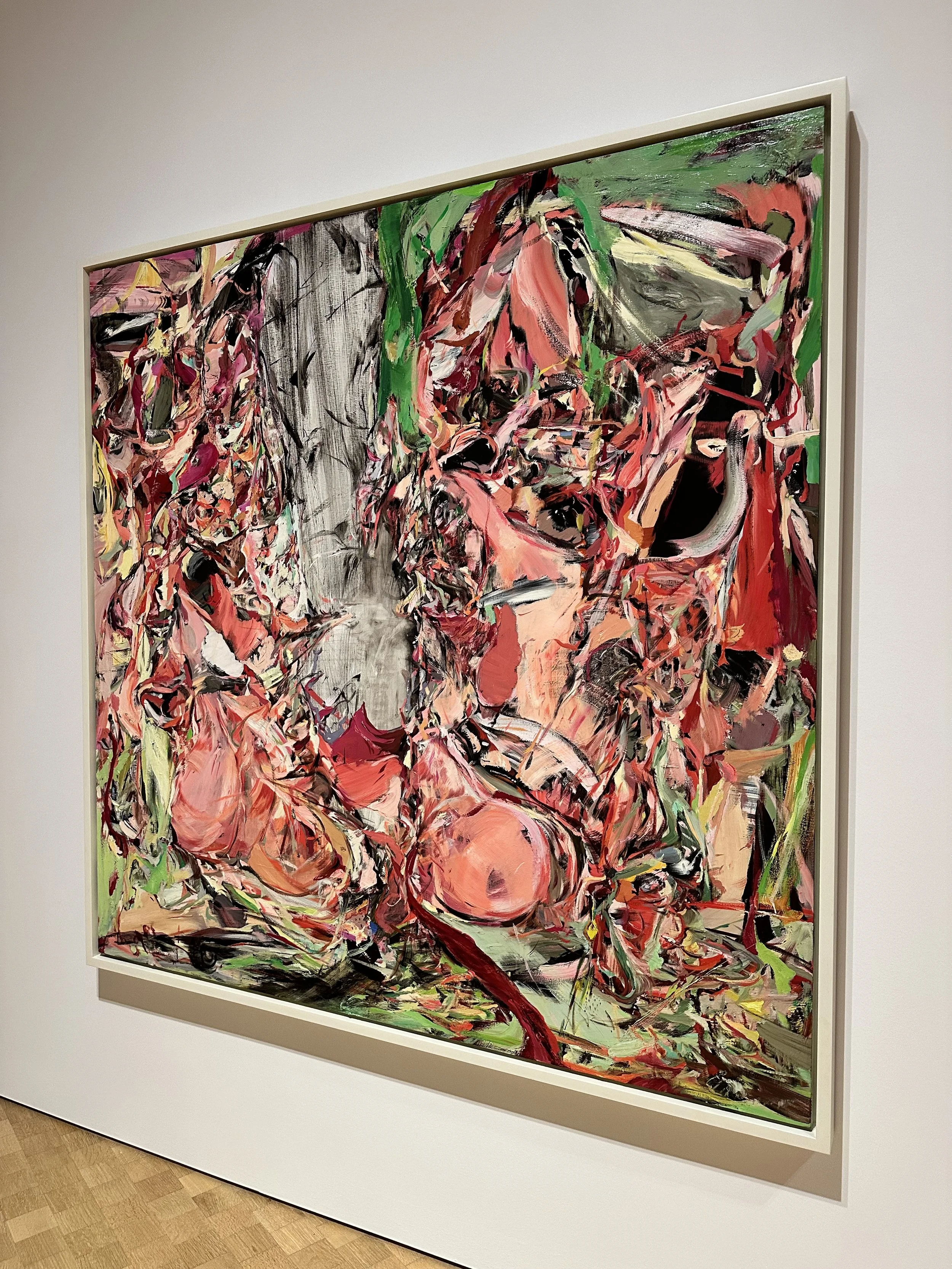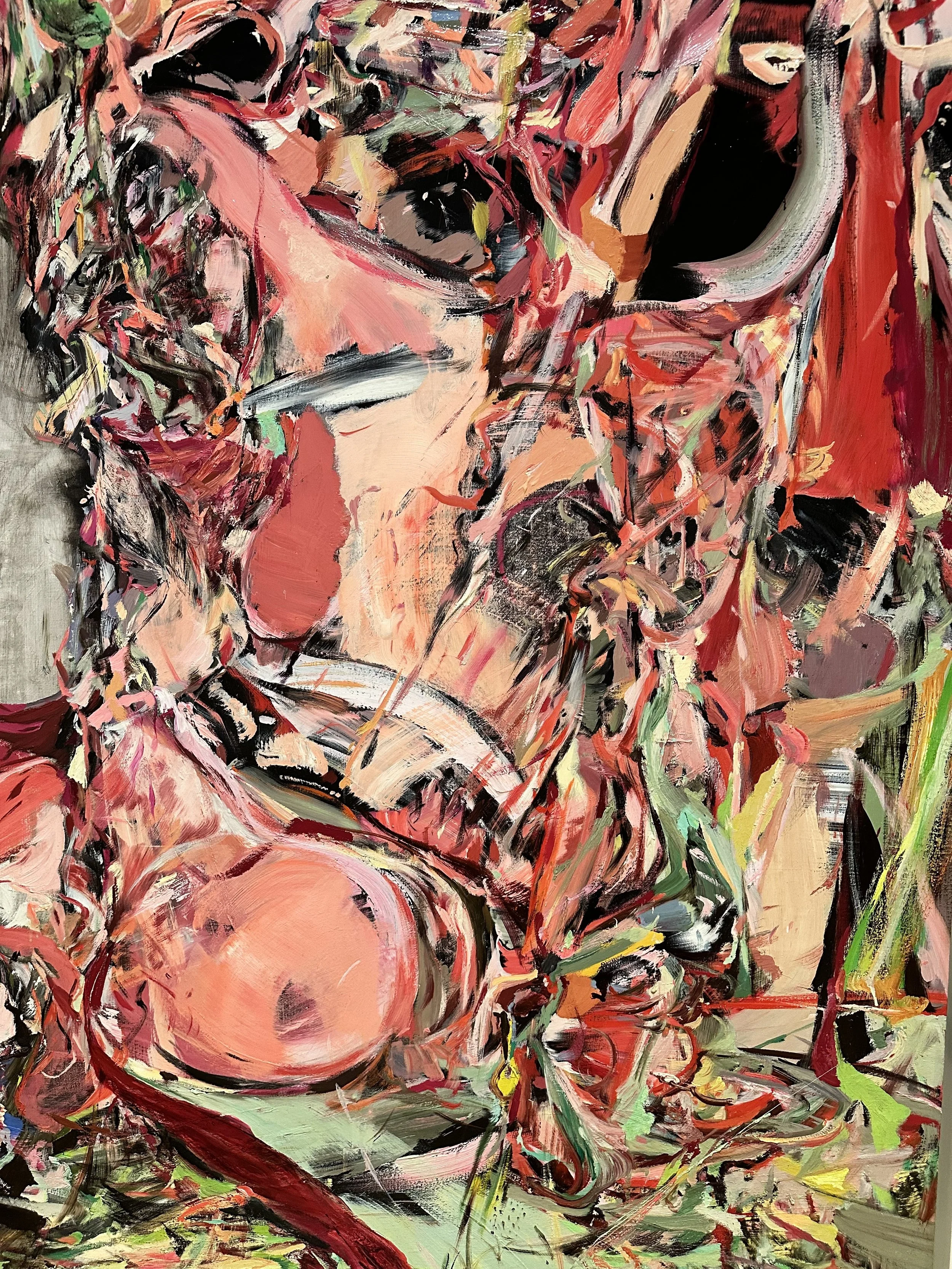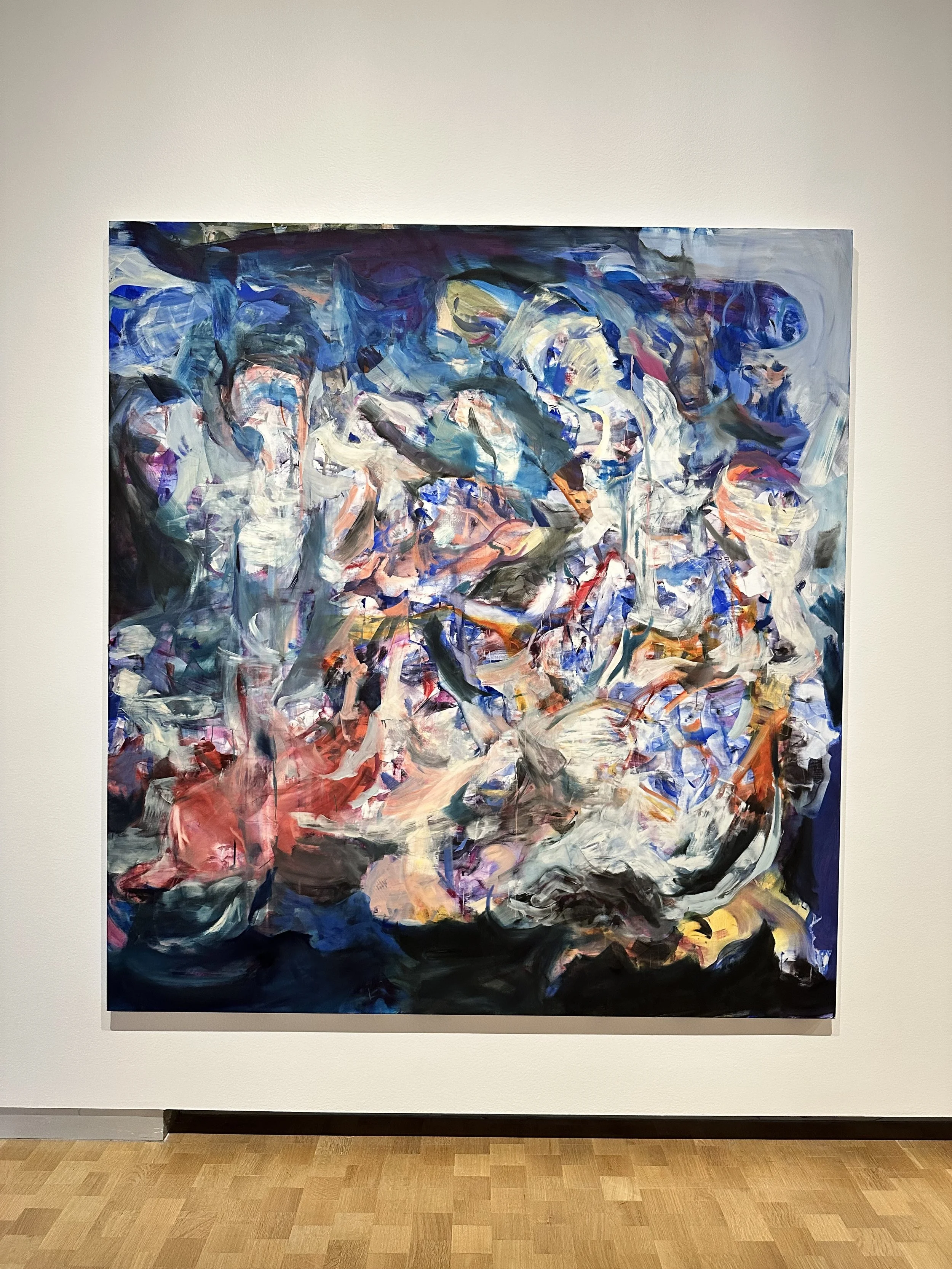Cecily Brown: Themes and Variations — A Viewing Room Experience
More than a review, this is a guided journey through one of the most compelling exhibitions of the year. As longtime admirers of Cecily Brown’s work, we’ve come across individual pieces in museums over the years—often displayed in a contemporary wing, a painting that stopped us in our tracks. But this is the first time we’ve experienced her work at this scale and scope. “Themes and Variations” offers over 30 paintings and drawings spanning decades, assembled with a curatorial precision that reveals just how layered, daring, and persistent her practice is. The show closes this weekend—but here, we invite you to linger a little longer.
Justify My Love, Oil on linen, 2003-2004
Presented in the Roberts Gallery at the Barnes, the show gathers over thirty paintings and related drawings that span decades of Brown’s career. It doesn’t feel chronological or didactic. Instead, it feels like entering a space that breathes with her ideas—dense, raw, and erotic—yet always aware of the history it’s poking holes through.
As we move through this online viewing room, we invite you to linger. This is not a rush-through or a scroll-and-go. This is a slow unfurling, just like Brown’s work itself—where what’s happening takes a moment to see and a lifetime to decode.
I. Returning and Revisiting
We begin in a room that doesn’t act like a “beginning.” Instead, it feels recursive—works speaking back to each other across years. Brown is known for revisiting old compositions, repainting or expanding on them, not to revise but to re-enter them with new questions. The act of doubling back becomes a method.
One canvas may echo another from years prior—brushwork that feels familiar, a color story that rhymes. But nothing stays still. Paint slips between abstraction and figuration, bodies bloom and dissolve in the same breath. It feels like memory, layered and unstable. We found ourselves returning to the same works multiple times, each visit peeling back something new.
This idea—that nothing is fixed—is central to Brown’s work. In a way, it mirrors the instability of the subjects she tackles: the female body, historical painting, sexual power, desire.
Untitled, Oil monotype with hand additions in pastel on lanaquarelle, 2023
II. Painting Flesh
Few artists handle the body the way Brown does. And in this section, we see her at her most audacious and unflinching. Drawing from centuries of art history—where the female nude is often painted passive, waiting, offered up to the male gaze—Brown’s figures resist legibility.
Here, the body is not one thing. It’s fractured, smeared, tangled in a dance with the very brushstrokes that form it. Flesh becomes something metaphysical. It’s both presence and disappearance. The eroticism is never clean, never cinematic—it’s sweaty, collapsing, alive.
Brown’s brushwork seduces and then confuses. We get close to recognition, only to lose it again. It reminds us how often we think we understand a body, a woman, a moment—until we don’t.
Spree, Oil on linen, 1999
III. In the Night Garden
The show opens up here, into a kind of wild dreamscape. These works play with landscape—not the peaceful, meditative kind, but the lush, unpredictable terrain of Rococo pleasure gardens, drawn from the influence of Goya and Fragonard.
Figures appear and disappear in thickets of paint. Lovers emerge from tangled backgrounds only to vanish again. There's a voyeuristic tension here, deliberate and unresolved. Sometimes the women meet our gaze; sometimes they seem unaware of it. Either way, they are never only objects.
Brown reclaims the garden—long a site of secret rendezvous and veiled desire in art history—and turns it into something more fractured, more chaotic, more human.
Girl on a Swing
Oil on Linen
2004
This painting takes its title from Francisco de Goya’s The Swing (1779), a work steeped in the Rococo fascination with leisure, flirtation, and voyeurism. Goya’s scene, like many from the era, captures a playful interaction between a man and a woman, but there’s a subtle charge beneath the surface. The young woman’s pose—mid-swing, with the underside of her skirt exposed—invites a gaze that’s both romantic and intrusive. Brown echoes this moment, not by replicating it, but by reactivating its tension. In her hands, the swing becomes less a symbol of carefree pleasure and more a site of layered power dynamics.
IV. Looking and Stealing
The final gallery may be the most conceptually piercing. Brown draws connections between the female nude and the still-life tradition—specifically 17th-century Dutch and Flemish paintings of hunted game.
On the surface, the subject matter couldn’t be more different. But the parallels Brown teases out are damning: both traditions display flesh—animal or female—as something to be consumed. Something offered up.
In these paintings, paint itself becomes the critique. Blood-red smears, butchered forms, soft flesh-tones—all blur into one storm of materiality. The violence isn’t hidden; it’s aestheticized, yes, but never neutral.
Brown isn’t moralizing. She’s showing. Dissecting. Asking us to look, and then look again.
In this work, the spoils of the hunt are presented with deliberate seduction, drawing on the tradition of Flemish still life painting—particularly the opulent compositions of Frans Snyders. Deer and swan carcasses hang heavily across the canvas, their presence both grand and grotesque. Brown’s familiar rabbits, first seen earlier in the exhibition, now lie splayed across the central table, their soft bodies echoing the vulnerable postures of reclining nudes. The draped rabbit becomes a visual bridge—linking the intimacy of the bedroom with the indulgence of the banquet table, and blurring the line between desire and consumption.
WHAT LINGERS
This exhibition left us reflecting on what painting is still capable of—especially in an age when images are built for speed, compression, and instant gratification. Cecily Brown doesn’t resolve or explain. Instead, she constructs a visual language that resists ease—one that requires time, attention, and a willingness to sit with ambiguity.
As longtime admirers of her work, Themes and Variations felt like a revelation. We’ve encountered Brown’s paintings before, often in brief and singular moments. But to see them gathered here—to follow the recursive gestures, the thematic echoes, the tension between seduction and critique—was to witness something far more profound: a painter in constant conversation with herself, her influences, and her viewers.
Though the exhibition may be drawing to a close, we hope this viewing room offers a kind of afterimage—a space to revisit, reconsider, and return to, just as Brown returns to her own forms and histories, again and again. And for those who didn’t have the chance to witness Themes and Variations in person, we hope this digital experience provides a glimpse—however partial—into what it felt like to move through the space, to stand before the work, and to be caught in its unrelenting pull.
We Didn’t Mean to Go to Sea, oil on linen, 2018















